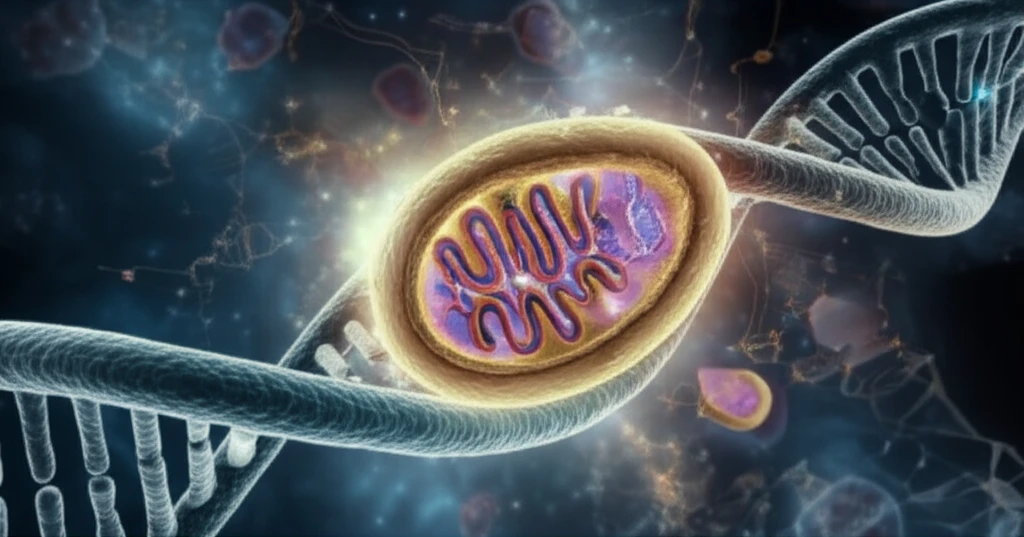
Decoding Mitochondrial DNA: Your Guide to Understanding Genetic Health
"Unlocking the secrets of mtDNA variants with bioinformatics: A clear path to understanding your genetic predispositions and personalized health strategies."
Mitochondrial diseases, while individually rare, collectively affect a significant portion of the population. These conditions, stemming from malfunctions in the mitochondria (the cell's powerhouses), present a wide range of symptoms due to the dual genetic control—both nuclear and mitochondrial DNA (mtDNA)—involved in their function. Understanding these diseases is crucial for those seeking to navigate genetic health challenges.
Human mtDNA, a compact, circular molecule, holds the blueprint for essential components of the oxidative phosphorylation (OXPHOS) system. OXPHOS is critical for energy production. Variations in mtDNA can disrupt this process, leading to diverse health issues. Identifying these variants accurately is a key step in personalized medicine, offering insights that can guide proactive health management.
Next-generation sequencing (NGS) has transformed the landscape of mitochondrial disease diagnostics. NGS enables comprehensive analysis of the entire mtDNA sequence, enhancing detection sensitivity and accuracy. This review explores how bioinformatics tools are essential in interpreting the complex data generated by NGS, helping to pinpoint disease-causing variants and paving the way for improved genetic counseling and patient care.
What Bioinformatics Tools Can Tell You About Your mtDNA

Bioinformatics tools are critical for accurately annotating mtDNA variants. These tools streamline the process, ensuring standardization and reliability in variant identification. This is achieved through consensus databases and in silico prediction tools, that allow reliable variant calling and interpretation. Here's how these tools work:
- Variant Frequency: Knowing the variant’s frequency in the general population and specific haplogroups is vital. This helps distinguish between common polymorphisms and rare, potentially pathogenic mutations.
- Clinical Penetrance: Integrating additional information, such as mitochondrial haplogroup, synergistic variants, and nuclear variants, can modulate clinical penetrance. This provides a more complete picture of how the variant might affect an individual.
- Cross-Species Conservation: Evaluating amino acid or nucleotide conservation across species can provide insights into the functional importance of a variant. Highly conserved regions are more likely to have significant functional consequences when altered.
- In Silico Prediction: Tools specifically designed for mtDNA, such as APOGEE, Mitotip, and MToolBox, offer predictions of variant pathogenicity. These tools consider the unique characteristics of mtDNA, improving the accuracy of their assessments.
The Future of mtDNA Analysis
As NGS technologies evolve, the capacity to gather and interpret mtDNA data is set to expand significantly. Collaborative efforts within the scientific community are essential to organize and leverage this growing body of information. By refining existing tools and creating new resources, researchers can improve our ability to predict mtDNA variant pathogenicity and provide more accurate genetic counseling. This will pave the way for more effective, personalized approaches to managing mitochondrial health and preventing disease.
